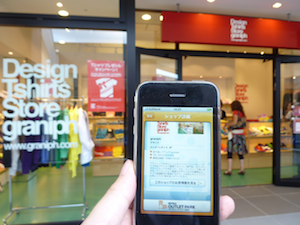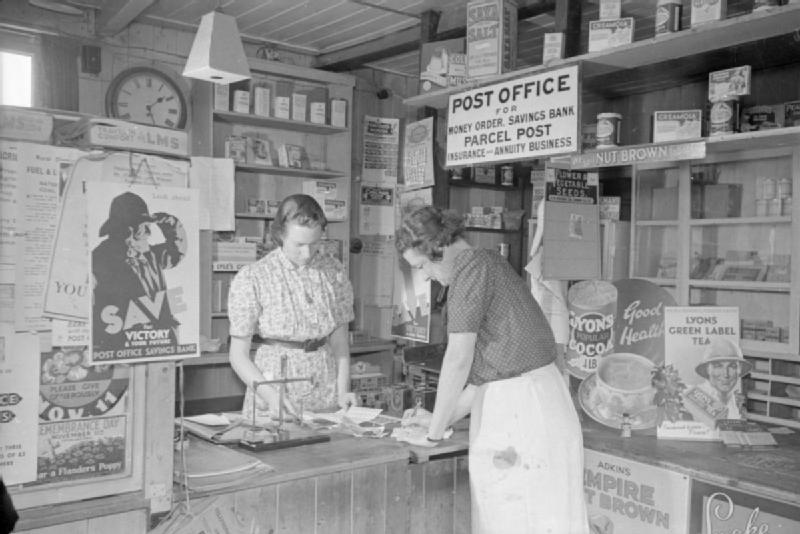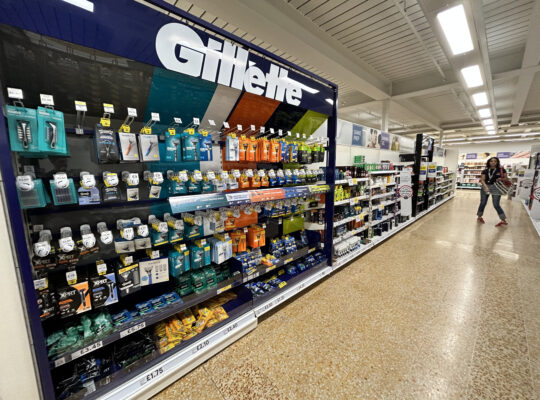 For all the talk about improving the experience we deliver to shoppers, too many shopping experiences still suck! The trouble with creating a better retail customer experience, is that every shopper wants something a little bit different. None of us are the same. So creating an ‘improved retail customer experience’ is challenging. But there is one thing that almost every shopper wants from almost every shopping trip (note the judicious use of ‘almost’ there!). Less pain, friction and frustration. And if you do nothing else, striving to remove this from your customer’s lives will probably help. If you can make progress towards a frictionless retail customer experience, then you are almost certainly moving in the right direction.
For all the talk about improving the experience we deliver to shoppers, too many shopping experiences still suck! The trouble with creating a better retail customer experience, is that every shopper wants something a little bit different. None of us are the same. So creating an ‘improved retail customer experience’ is challenging. But there is one thing that almost every shopper wants from almost every shopping trip (note the judicious use of ‘almost’ there!). Less pain, friction and frustration. And if you do nothing else, striving to remove this from your customer’s lives will probably help. If you can make progress towards a frictionless retail customer experience, then you are almost certainly moving in the right direction.
A completely friction-free retail customer experience isn’t desirable, however
Before I go further, there is a disclaimer. It isn’t necessarily a good idea to remove all the friction from every retail customer experience. Wait, what? Let me repeat. It isn’t always a good idea to remove all friction from every retail customer experience. Why? Because ‘frictionless’ makes it easy for the shopper to do what they want to do. And that means, often, to buy what they think they want to buy. But often, we want them to do something different. As a marketer, we want to change their behavior (like, for example, to switch from a competitor brand to ours). Its unlikely that we’ll be able to divert a shopper from the brand they planned to buy without introducing just a little friction into the shopping experience, right? So a little bit of friction is OK (which is why I rail at the idea of creating frictionless shopping). But we need to do it in a way that is smooth. Disruptive, but not too disruptive. Liken this to running. Running through deep mud is hard work (that’ll be way too much friction). But if you remove the ground completely, then there is no traction, no movement forward. We need a little friction in the retail customer experience to progress!
What do we mean by a retail customer experience pain?
I assume you all know this, as you are all shoppers after all, but for completeness, let’s just spell it out. You know those times when you go shopping and you get frustrated? That’s customer pain. Can’t find your brand on the shelf? Shopper frustration. Your preferred product is out of stock? Friction. A long queue at the checkout? More friction. The self-checkout light flashes repeatedly saying you need to wait for a member of staff? Customer frustration. The shoe store assistant who walks away for ten minutes only to return and tell you that they don’t have your size? Shopper pain.
Life is full of friction. It always has been. But the Internet has trained us to be less patient and to have higher expectations, so we notice friction more, and that creates more pain and frustration. We also have more choices of where to shop and what to buy than ever before, so even a small amount of friction can be enough to lose a shopper and a sale.
How to identify friction in a retail customer experience?
Of course, I could simply suggest going and doing a bundle of shopper research to follow shoppers through their shopper journey and to identify points of friction, but not everyone can find a budget to do market research at the drop of a hat. If you do have a budget, exploring pain points for shoppers is a really interesting and valuable area to look at (And if you want some help with that, please give me a shout!).
But if you don’t have access to research, what should you do to identify shopper pain and friction? There are two broad avenues of activity that I would recommend, as follows:
Improve retail customer experience – Focus on the most likely culprits:
We are all shoppers, and so we all have a sense of what the biggest frustrations are. Within a category, out-of-stocks and not being able to find a product or brand are by far the biggest pain points. So if you want to improve retail customer experience, this is always a good place to start.
Also look hard at the activities that work against this. I’ve said this countless times, but promotions increase out-of-stocks. So while all shoppers love a deal, there are significant negative implications that introduce friction and pain to the shopping experience.
Likewise any marketing activity (that isn’t permanently in the store) runs the risk of creating shopper friction and pain. Little dangly signs, or displays in front of the shelf: yes they attract attention but they can also add friction.
Next biggest frustration within a category is actually being able to find the category in the first place! Shoppers shop by habit and logic. Category placement needs to be logical, and adjacencies planned carefully.
Beyond individual categories, the main friction points are at the check-out. No-one likes queuing after all. And beware that the greater the promise of friction-free shopping, the more frustrating a bad experience is. A self-checkout promises a better and faster shopping experience. A poorly executed self-checkout is arguable worse than a queue (as you can probably tell, I’ve had some bad self-checkout experiences recently).
The last major pain point for most shoppers is assistance. Online or offline, shoppers now expect rapid, knowledgeable assistance.
Improve retail customer experience – Go to stores:
The best way to understand the world from a shopper’s point of view is to go to a store (and if you want to know how to do a store check properly, check here). Look at the shelf and see if it is logical. Look at the total layout and see if it makes sense. Step back for a minute and look at the entire shelf. Does it look crowded and cluttered, or well-spaced and inviting? Compare it to other categories and stores – are there any obvious learnings or differences? Take what you already know about shopper missions and ask yourself: ‘if that was my mission, is it easy to find all of the options I have for fulfilling those?’
And you can go to online stores recently. I’ve been surveying a lot of grocery retail sites recently, and the friction and frustration varies dramatically from chain to chain. When was the last time you visited online stores to do a store check?
Improve retail customer experience – Talk to shoppers:
Very few of us do it, but it’s really rather simple. If you see a shopper behaving in a way that suggests friction (walking away without buying, for example) just politely ask why. Formal surveys might be needed to verify the problem, but the seeds of any actions can often be found by just asking shoppers.
Improve retail customer experience – Talk to store staff:
In store staff are in the store all the time, so they see what shoppers do far more than we can hope for. They also bear the brunt of any shopper dissatisfaction. What do they get asked for? Which categories are the ones that shoppers can’t find? Which brands? And what causes shoppers to get visibly upset?
Improve retail customer experience – Follow the data trail:
A lot easier to do online than offline, but looking for abandoned shopping carts is an obvious first place to look. In real stores, comparing traffic and conversion data to norms is a suitable equivalent.
The reality is that most of the things that add friction to a shopping trip are obvious, and fixable. Stores can be made more shoppable through a combination of logic, common sense, observation and asking the right questions. If you’d like some help understanding how to improve the retail customer experience for your brand, category or stores, then please give me a call and we’ll talk about how I might be able to help. If every retailer and every brand put these principles first, I’m pretty sure there would be a significant decrease in shopper friction and improve the retail customer experience.





